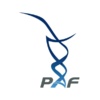Targeting Serine and Thiol Metabolism in Propionic Acidemia
希拉里·韦尔农,,en,基因工程药物McKusick-纳森研究所,,en,约翰·霍普金斯大学,,en,马里兰,,en, MD PhD, 约翰斯·霍普金斯大学,,en,在丙酸血症靶向丝氨酸和巯基代谢,,en,在研项目,,en,题为“,,en,瞄准丝氨酸和巯基代谢丙酸血症”,,en,我们将定义丙酸血症的细胞功能障碍的新途径中的作用,,en,人们已经知道了几十年的是丙酸血症的遗传原因是在编码丙酰辅酶A羧化酶的基因之一的异常,,en,导致丙酸的积累,它的代谢产物,,en
While it has been known for several decades that dysfunction of the enzyme propionyl-CoA carboxylase underlies propionic acidemia (PA), many key downstream metabolic adaptions to this primary defect are not well defined. In our research, we developed and studied a new cellular model of PA, with the goals of understanding how the cell is affected in PA, and to identify new pathways for potential treatment targeting.
We initially studied both protein expression in fibroblasts (skin cells) from individuals with PA, and metabolites in urine from individuals with PA, and discovered changes in pathways related to serine metabolism. Serine is an important amino acid that is involved in the synthesis of folate intermediates, glutathione, and other important cellular metabolites. Serine metabolism is of particular interest because it has also been shown recently to be dysregulated in other mitochondrial diseases, and there is a growing interest in how to target this pathway for therapeutic intervention.
In order to more closely study these findings, we developed a new cellular model of propionyl-CoA carboxylase deficiency, where we used CRISPR technology to mutate the PCCA gene in a kidney cell line called HEK293. This new model cell line has important biochemical hallmarks of PA, including absence of the PCCA protein, elevated propionyl-carnitine, very low methylmalonyl-carnitine, and elevated glycine. We discovered that when these cells are in the growth phase, they express genes involved in serine synthesis at higher levels than cells that have normal propionyl-CoA carboxylase activity. We further discovered that the PA cells are very sensitive to deprivation of serine in their culture media, and grow slower than cells with intact propionyl-CoA carboxylase activity. This growth abnormality is not seen when the cells are grown in media that contains serine. Interestingly, we looked at these same pathways in a CRISPR model of methylmalonic acidemia, a closely related disorder to PA, and while we found some overlap in sensitivity to serine, the gene expression patterns we different. This highlights the biochemical uniqueness of PA. Currently, we are completing flux metabolomics studies in these cells, which will determine exactly what this serine is being metabolized to, and we expect these experiments to be completed by the end of August. In our next steps, we plan to study how treating the cells with different metabolites may alleviate this serine growth defect.
We would like to sincerely thank the Propionic Acidemia Foundation for supporting our research. The funding we received has led to important breakthroughs in our work, and we are excited to continue to move this research forward in the coming years.
9月更新 2018
